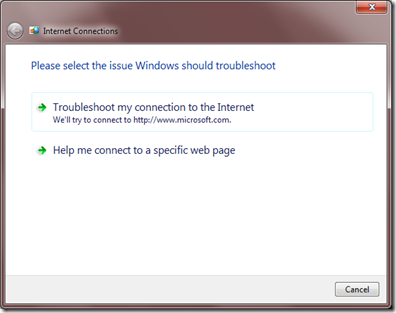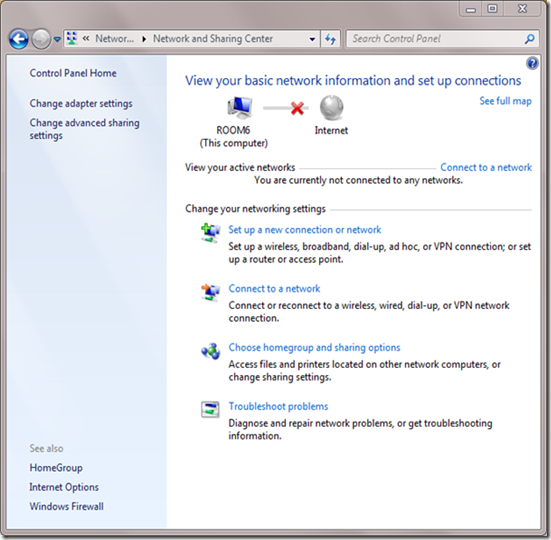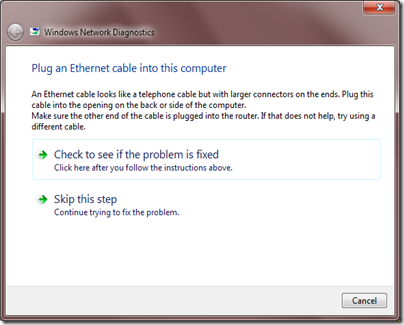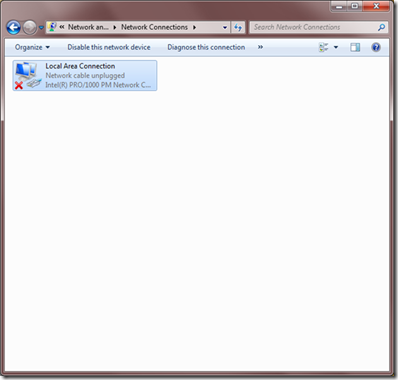William Stanek: We interrupt our regularly scheduled broadcast again (Part Deux, Step 1)
William here. Digging deeper into the networking problem that I discussed last time. To recap: the problem I’ve encountered was this:
>>>>>The computer is one of many running on a fairly complex home network. The network has a single router and multiple network switches. When the operating system starts, the computer is unable to connect to the network or to the Internet. The computer is running Windows 7 64-bit and has a single 1.0 Gbps network adapter.<<<<<
The questions to you, the reader, were:
- Is this an operating system problem?
- Is this a hardware problem?
- Is this a configuration problem?
- Is this just a quirk or a temporary hiccup?
Along with: How would you go about troubleshooting and resolving the problem?
This type of problem is always so much fun (and no sarcasm intended; I love this stuff ;-) And it’s not so much a problem as it is a puzzle waiting to be solved. So where to begin unraveling the puzzle?
Guesses? Well, let’s start with “Checking for the obvious” and call that Step 1. The question we are seeking to answer is this:
>>>>>Is this just a quirk or a temporary hiccup? Also implied in this is a check of the basics. Here, that means checking the cables.
So quirk, hiccup, or basic cable issue? Easy enough to determine. If this was a problem with the connection between the switch the computer is plugged into and the router, or between the router and the Internet, the problem would look like this in Network And Sharing Center:
Clicking the red X in the summary network map launches the built-in Networking troubleshooter. And the troubleshooter quickly would tell you the following:
As an aside, a disconnect between a switch and a router is largely indistinguishable from a TCP/IP configuration problem at this point. When you proceed with automated troubleshooting, the Networking troubleshooter checks mostly for configuration issues and won’t necessarily be able to tell you there is a disconnect between the switch and the router. The troubleshooter performs the following checks in this order:
- Web connectivity
- Name resolution
- Remote host availability
- Network configuration
- Network gateway accessibility
- Re-check network configuration
To see the detailed results of the automated troubleshooting, you need to click the View Detailed Information link provided. You’ll then be able to access the troubleshooting report.
If this was a problem with the computer’s connection to the switch, the problem would look like this in Network And Sharing Center:
Clicking the red X in the summary network map launches the built-in Networking troubleshooter. And the troubleshooter quickly would tell you the following:
Of course, you also could have checked for the problem in the Network Connections window and you would have known the same thing:
As an aside, whether the computer end or the switch end was disconnected, it only takes Windows 7 a few seconds to detect that you’ve reconnected the Ethernet cable. Windows 7 will then attempt to connect you to the local area network (LAN). If the computer is connected to a switch and not to the rest of the LAN and the Internet, Windows 7 likely will show that you are connected to an Unidentified Network and that you have no Internet access.
The problem the computer is experiencing here, however, is very different. The computer thinks it is on multiple networks. It has no network connection and no Internet connection, even though the basic cabling is good. So is this just a quirk or hiccup? Well, let’s check…and one way to do this is simply to disable and then enable the network adapter.
Any guesses as to what happens when we do this? Well, it does force the computer to re-evaluate the networking components and configuration—and more important, in this particular case, the problem appears to go away. The network connectivity returns and all looks good. But does it really?
Thanks for reading! Tune in next time, when I continue to dig in to this issue and provide a few more answers. Your comments and emails are always welcome, especially if you think you know the answer (and I’ll gladly tell you privately if you are right).
William R. Stanek
williamstanek at aol dot com




